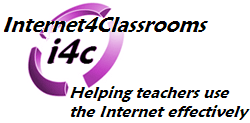
 |
Links for K-12 Teachers | Assessment Assistance | On-Line Practice Modules | Daily Dose of the Web
Do you ever get a warning message that says you are "dangerously
low on resources" but you know you have over 128MB of memory?
Insufficient resource errors occur when Windows calculates that
not enough system resources are available to perform the desired operation.
Symptoms:
- Your computer becomes slow after you run and quit one or more programs.
- Your mouse starts to act strange.
- Your computer windows start losing their content and color.
- You cannot open your programs without error messages.
- Your programs are constantly interrupted with "Illegal Operation" messages or freeze repeatedly.
Some programs have what is referred to as "resource leaks."
A program that "leaks resources," is a program that does not release your computer's system resources. This can lead to your computer's system resources becoming so low that your computer may become unstable. If you restart your computer, all of your system resources should be available.Another cause of resource leaks would be starting a program and then quitting it before it has completely started. When you do so, your resources leak, and your free system resources decrease. Fully executing one program at a time helps resolve some losses.
For clarification: Resources use a specified section of your computer and cannot be extended or added onto no matter how many memory chips you insert into your computer. System Resources FAQ offers an extensive clarification of the differences between system resources and memory.
To check out your system resources follow these steps.
Step One:
Right click My Computer and select Properties.
Step Two:
Select the tab that says Performance.
Step Three:
Under Performance Status, look at the second line that says System Resources
It will tell you what level you are at.The higher the number, the better your machine will operate.
If your resources get under 40%, you may begin experiencing some machine problems.
Solutions:
Close windows not being used.
Close programs not needed that load when you start Windows. To determine what programs are running, press CTRL+ALT+DELETE, and make a note of all the programs listed. Note that Explorer is the Windows operating system and Systray is the system tray located on the right-side of the task bar. You should not quit these two programs. Determine which programs must run all of the time, and then quit the remaining programs. To quit a program, press CTRL+ALT+DELETE, click the program you want to quit, and then click End Task.
Clean out your Clipboard. Whenever you copy a large amount of information to the clipboard, it will stay there until something else is copied onto it. To clear out a large data amount that you have copied and pasted, copy a single letter to the clipboard. Highlight a letter and go to Edit on the Menu Bar and choose Copy. This will free up some memory.
Don't use wallpaper or use a small bitmap and tile it
If you run an application that uses system resources every time it runs, try to keep it open instead of closing and reopening it many times during the day.
Try not to load fonts that aren't needed.
Check your screen savers to make sure that they are not leaking resources.
Disable some applications that start automatically when you start Windows.
Download a free real time physical memory management program (MaxMem) that automatically ensures that you always have as much physical memory available as possible. (Thanks to Anita Lewis for suggesting this!)
Remember, the ultimate solution is to reboot your system.
If you need further information, check out this site-System Resources FAQ

Custom Search
| Visitors since November 2000 |